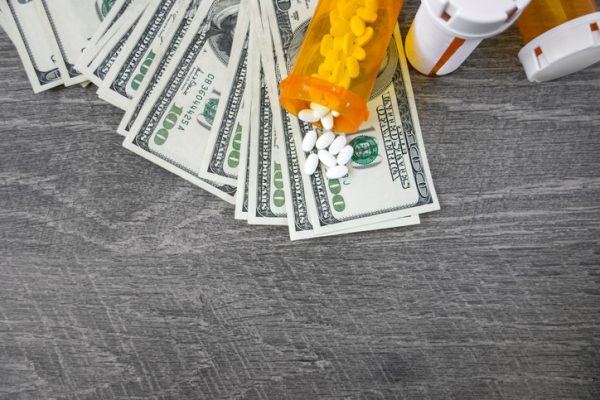
January price increases have become a ritual for the pharmaceutical industry. Every year, pharmaceutical companies have raised the prices of medicines at the expense of patients, employers, and health plans alike. We don’t have to look far for a number of examples of how the pharmaceutical industry continues to put profits over patients.
In the first three weeks of January alone, pharmaceutical companies increased the list price of 775 brand-name drugs ranging from 1 to 33%, including a 6% increase on several critical cancer medicines. When compared to an average inflation rate of 3.1%, these add up to significant increases on already, high-cost drugs. And still more price increases are expected to be disclosed by drugmakers throughout the year.

With the Rise of AI, What IP Disputes in Healthcare Are Likely to Emerge?
Munck Wilson Mandala Partner Greg Howison shared his perspective on some of the legal ramifications around AI, IP, connected devices and the data they generate, in response to emailed questions.
Efforts by the federal government to curb price increases haven’t discouraged manufacturers from raising the cost of prescription drugs like clockwork. Just a year after the Inflation Reduction Act rebates kicked in, 64 products have triggered penalties for taking increases faster than inflation.
The first round of Medicare-negotiated prices will be announced this fall, but that hasn’t dissuaded drugmakers from maximizing profits before the negotiations take effect in 2026. The country’s top-selling Medicare Part D drug, Bristol Myers Squibb’s blood thinner Eliquis, which is included on the list of the first 10 medications to face Medicare price negotiation, increased its price this month by six percent.
Shockingly, some of the drugs taking large increases this month already cost six figures. The prices of Bristol Myers Squibb’s Abecma, a CAR-T cancer treatment for late-stage multiple myeloma that already cost more than $450,000 in 2023, increased by an additional $41,000. Pfizer’s Vyndaqel and Vyndamax, the world’s most expensive cardiovascular drugs, increased by nearly $1,500 for a one-month supply – that’s an extra $17,500 a year. Such sizable increases on these already-expensive drugs truly show how the industry has normalized maximizing profits at the expense of patients.
On the other end of the spectrum, generics aren’t immune to price increases either. While generics and biosimilars were designed to foster market competition and lower prices for patients, several generic manufacturers increased prices by double-digits this month. For example, prices for common everyday antibiotics Gentamicin Sulfate and Doxycycline increased by 25% and 10%, respectively, and diuretic Triamterene/HCTZ increased by 18%.
It’s important to remember that drug price hikes don’t take place in a vacuum. These increases add pressure to a system that is already struggling to pay for existing medicines, especially when those medicines are being deployed to treat conditions with large patient populations. Take GLP-1s, a high-demand class of diabetes and weight-loss drugs that dominated headlines over the last year. As Novo Nordisk and Eli Lilly raise the price of Ozempic and Mounjaro to nearly $970 and $1,070 a month respectively, there’s mounting concern over what this combination of growing demand and high prices means for the health system.
While investors anticipate Novo Nordisk to rake in $11 billion and $4 billion in revenue for Ozempic and Wegovy, respectively, the potential annual cost to Medicare could range from $13.6 billion to $26.8 billion, if just 10% of Medicare beneficiaries used Wegovy. As list prices continue to rise at a similar pace year-over-year, the U.S. health system can’t sustain this constant upward trajectory on all the drugs in the system while ensuring it has the financial capacity to accommodate new drug approvals.
Amidst these skyrocketing prices, however, Pharmacy Benefit Managers (PBMs) are actively lowering costs for employers and patients, thus creating that headroom to pay for future medicines. While pharmaceutical companies continue to raise list prices year-over-year, we work behind the scenes to fight the trend by driving competition, negotiating with drugmakers and incentivizing the use of less expensive medicines that deliver the same clinical value. In fact, PBMs are projected to save health plan sponsors and consumers more than $1 trillion from 2020 to 2029.
We use every tool in our toolbox to drive affordability and access, so it is disappointing but not surprising that the pharmaceutical industry likes to point the finger at PBMs for their higher prices. However, if the pharmaceutical industry’s claim that “rebates increase drug costs” were true, there would be a correlation between rebates and price increases. That is not the case. In fact, even though treatments for complex conditions including cancer, lupus and HIV/AIDS, (Pomalyst, Benlysta and Tivicay), have zero rebates, manufacturers have increased their prices between 5% and 6% this month. Further, 48 drugs under Medicare Part B, including blood thinners, antibiotics and cancer medications increased faster than inflation in the final quarter of 2023 alone.
The reality is rebates on prescription drugs are just one way that we drive costs down, not up. As some manufacturers increasingly play pricing games by offering multiple prices for the same medication, we’ve launched an entire formulary to ensure patient access to those lower list price options. As others discontinue effective products to artificially inflate the price of branded alternatives that they call “authorized generics”, we support patients in maintaining affordable access to the medications they need.
The bottom line: regardless of what pharma companies say and do, we will work relentlessly to protect patients and clients from their greedy, price-gouging tactics by countering these increases with competition while improving health outcomes in the process.
This year, let’s set a New Year’s resolution: holding pharma accountable for their high (and rising) prices, so we can say goodbye to this price-gouging once and for all.
Based on analysis of WAC price increases on brand and generic drugs taking effect in January 2024.
Adam Kautzner is President of Evernorth’s Express Scripts, one of the nation’s leading pharmacy benefit management companies that serves more than 112 million Americans. Kautzner earned his PharmD from St. Louis College of Pharmacy.














